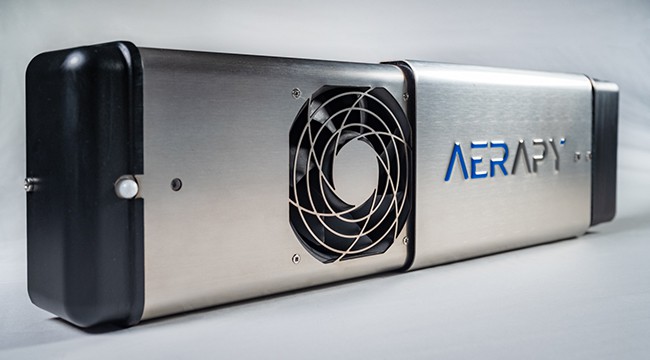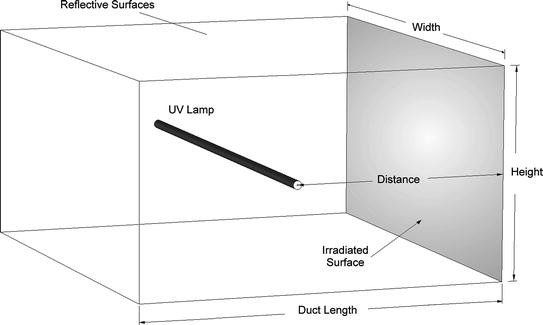Much UVC Light: A Game-Changer in the Battle Versus Airborne Pathogens
In the ever-evolving battle against airborne virus, the appearance of much UVC light has actually sparked significant rate of interest and capacity. This ingenious innovation, utilizing a certain series of ultraviolet light, holds the assurance of changing just how we combat the spread of dangerous microbes in various environments. Its one-of-a-kind residential properties and potential applications have actually gathered attention from researchers, researchers, and public health specialists alike. Yet just what is much UVC light, and exactly how does it work? In this conversation, we will explore the science behind this game-changing innovation, discover its benefits, and examine its future ramifications in the ongoing fight against air-borne microorganisms.
The Science Behind Far UVC Light
The scientific concepts underlying the usage of Far UVC light as a possible service for combating airborne pathogens are both elaborate and promising. Much UVC light describes a certain series of ultraviolet (UV) light wavelengths, commonly in between 207 and 222 nanometers, which have been located to efficiently eliminate or inactivate microbes such as microorganisms and infections. Unlike standard UVC light, which has a much shorter wavelength and is understood for its germicidal buildings yet can additionally hurt human skin and eyes, Far UVC light has actually been shown to be secure for human exposure.
The essential mechanism behind the performance of Far UVC light lies in its capacity to pass through and ruin the hereditary product of bacteria, including their DNA and RNA. When revealed to Far UVC light, the hereditary material undergoes a process called photodimerization, where nearby bases in the DNA or RNA molecule bind together, preventing duplication and providing the microorganism unable to duplicate or trigger infection.

How Far UVC Light Functions
Much UVC light operates by utilizing details ultraviolet wavelengths to effectively neutralize bacteria and avoid their duplication, making it an appealing service for combating airborne pathogens. Unlike conventional UVC light, which is unsafe to human skin and eyes, far UVC light has much shorter wavelengths, normally in the variety of 207 to 222 nanometers (nm), that do not pass through the outer layer of the skin or the tear layer of the eye. This makes it safe for continual human direct exposure, while still being deadly to germs and viruses.
The performance of far UVC light lies in its capability to destroy the dna and pass through and RNA of microorganisms. When revealed to far UVC light, the genetic material of these pathogens is damaged, making them not able to reproduce and contaminate cells. Furthermore, studies have revealed that far UVC light can properly inactivate air-borne infections, such as influenza, measles, and coronaviruses, consisting of SARS-CoV-2, the virus liable for COVID-19.
Moreover, far UVC light is likewise capable of sanitizing surfaces and objects in an enclosed space. By setting up far UVC light fixtures or utilizing mobile much UVC light devices, it is possible to constantly decontaminate the air and surfaces, decreasing the threat of air-borne transmission of pathogens.
Advantages of Far UVC Light
Utilizing much UVC light offers a variety of substantial advantages in combating air-borne virus and making sure a safer environment for continual human exposure. Among the key benefits of much UVC light is its capacity to effectively neutralize different kinds of unsafe microorganisms, infections, and fungis without triggering harm to humans. Unlike traditional UV light, which can be hazardous to human skin and eyes, far UVC light has a much shorter wavelength that enables it to target and destroy microorganisms while posturing very little threat to human health and wellness.

In addition, far UVC light is much safer for the environment contrasted to traditional sanitation techniques. Chemical anti-bacterials often contain harmful ingredients that can have negative effect on the atmosphere. Far UVC light, on the various other hand, does not generate any hazardous results or residues, making it a more sustainable and environmentally friendly solution.
Applications of Far UVC Light
Among the vital uses for much UVC light is in the area of air purification and disinfection. Much UVC light has shown to be reliable in getting rid of airborne microorganisms such as fungi, infections, and bacteria. This innovation works by discharging a particular wavelength of light that is capable of penetrating the outer layers of bacteria and damaging their DNA, making them incapable and non-active to reproduce. Unlike conventional UV light, far UVC light is risk-free for human exposure, making it suitable for continuous use in public areas such as schools, health centers, and workplaces.
One more application of much UVC light remains in the healthcare sector. It can be used to disinfect medical facility areas, running theaters, and clinical devices, reducing the danger of healthcare-associated infections. Additionally, far UVC light can be integrated right into heating and cooling systems to detoxify the air distributing in buildings, providing an added layer of security versus air-borne microorganisms.
Furthermore, far UVC light can be utilized in the food sector to stop foodborne diseases. It can be used to disinfect food processing facilities, killing microorganisms and other bacteria that may contaminate food products.
Future Ramifications of Far UVC Light
The get more potential future applications of far UVC light are huge and hold assurance for numerous sectors and industries. One of the essential areas where far UVC light could have a significant impact is in healthcare settings. Facilities and health centers might utilize far UVC light to disinfect client areas, operating movie theaters, and waiting areas, minimizing the threat of healthcare-associated infections - far-uvc. This could possibly cause better patient outcomes and lowered health care costs.
Moreover, using much UVC light in public spaces such as airports, train stations, and shopping center could help control the spread of air-borne virus. By continually decontaminating these locations, the risk of transmission can find more info be considerably reduced, supplying a much safer setting for people.
An additional prospective application of far UVC light remains in the food sector. Much UVC light could be used to decontaminate cooking surface areas, packaging products, and storage areas. This can assist protect against the contamination of food and lower the incident of foodborne ailments.
Furthermore, far UVC light can be utilized in HVAC systems to sanitize the air circulating in buildings. This can be specifically useful in congested areas such as offices, colleges, and movie theaters, where the threat of airborne transmission is higher.
Verdict
In final thought, much UVC light her latest blog has actually emerged as a game-changer in the battle versus air-borne pathogens. From public areas to healthcare setups, far UVC light offers various benefits in lowering the transmission of diseases.
Far UVC light refers to a details variety of ultraviolet (UV) light wavelengths, generally in between 207 and 222 nanometers, which have been found to properly eliminate or inactivate microbes such as viruses and bacteria. far-uvc. Unlike standard UVC light, which has a much shorter wavelength and is known for its germicidal residential properties but can also harm human skin and eyes, Far UVC light has actually been shown to be safe for human direct exposure
Unlike traditional UVC light, which is unsafe to human skin and eyes, far UVC light has much shorter wavelengths, commonly in the array of 207 to 222 nanometers (nm), that do not pass through the external layer of the skin or the tear layer of the eye. Unlike traditional UV light, which can be harmful to human skin and eyes, much UVC light has a much shorter wavelength that permits it to target and ruin pathogens while posing very little danger to human health.
Unlike conventional UV light, far UVC light is secure for human exposure, making it suitable for constant use in public rooms such as colleges, health centers, and workplaces.